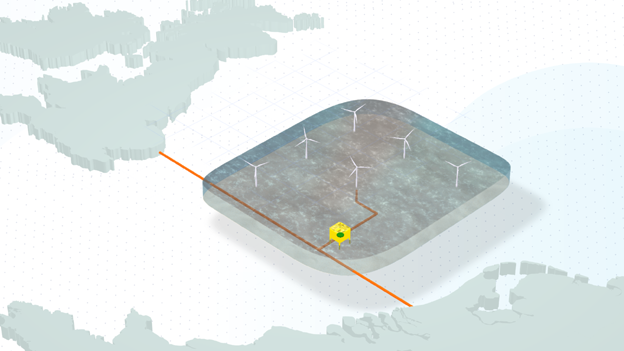TenneT and its UK project partner National Grid Ventures (NGV), will develop a Multi-Purpose Interconnector, called LionLink. This project will deliver a new electricity link between the Netherlands and the United Kingdom. LionLink would support decarbonisation, energy independence and strengthen British, Dutch and European security of supply. The development would be the first of its kind for the UK and the Netherlands, and the first step towards an integrated North Sea grid.
Like a conventional interconnector, LionLink enables cross-border electricity transmission and trade. The project is referred to as a Multi-Purpose Interconnector because it will connect the two countries via a Dutch offshore wind farm. LionLink could supply up 1.4 to 2 gigawatts (GW) of electricity.
LionLink will benefit from the strong and established long-term partnership between the UK and the Netherlands. The British and Dutch energy markets were first connected in 2011 via the BritNed interconnector, which has played an important role in supporting energy security in the winter of 2022.

Image source: TenneT
Technical infrastructure
LionLink will connect the Dutch and UK grid via subsea cables, which will connect to a Dutch offshore wind farm via an offshore converter platform.
Platform
The offshore converter platform will be in the Dutch North Sea and owned by TenneT. The platform will have a fixed capacity of 2 GW, which will connected to a Dutch offshore windfarm. Via 66 kilovolt cables, the energy from the offshore wind turbines is transported to the platform. Here, four transformers increase the voltage before the electricity enters the converter halls. In these halls the energy is converted to 525 kV DC, in order to prepare it for transmission to land. The connection operates on 525 kV high voltage direct current - allowing highly efficient energy transmission over long distances.
Cabling
LionLink will transmit electricity under the North Sea through submarine cables. All the cables will be buried underground from the landfall site to the converter station and then underground again from the converter station to the substation.
Converter station on land
At the converter station, the electricity will be transformed from high voltage direct current (HVDC) into high voltage alternating current (HVAC), which is necessary to enable the electricity to be fed into the onshore high voltage grid.
KeyFacts Energy Industry Directory: TenneT
 KEYFACT Energy
KEYFACT Energy